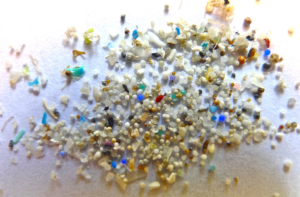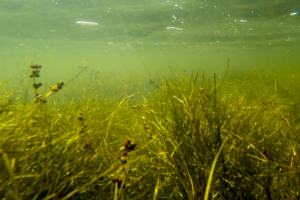Global Impact of Microplastics

Microplastics are any type of plastic fragment that is less than 5mm in length. These microscopic particles can be specifically fabricated for products like facial scrubs, or broken down from larger pieces of plastic debris. There has been growing concern from scientists and the public about the impact these microscopic fragments have on marine ecosystems. Professor Rob Hale of William & Mary’s Virginia Institute of Marine Science (VIMS) is the lead author of a new “Grand Challenges” paper, “A Global Perspective on Microplastics,” which stresses the growing problem of microplastics, not only in the marine environment, but as a global phenomenon.
Study Uncovers Unique Seagrass Reproductive Trait

Submerged aquatic vegetation, or bay grasses, in the Severn River Sanctuary in Anne Arundel County, Md., on July 10, 2016. (Photo by Will Parson/Chesapeake Bay Program)
In collaboration with a team from the University of Western Australia, VIMS researcher, Dr. Robert “JJ” Orth, has revealed groundbreaking new information on how some seagrasses reproduce. Together, they were able to produce the first example of a winged seed in marine angiosperms and provide some insight into the reproductive advantage this adaptation might have. Unlike the familiar “helicopter” maple seeds which utilize wings to distance themselves from parent plants, the winged seeds of the seagrass species Posidonia make use of ocean currents to quickly and securely plant themselves on the seafloor soon. This allows the seeds to take root even in areas with strong currents. These findings come at the end of nearly 30 years of research and will help to guide Australian seagrass restoration efforts and inform efforts in the Chesapeake Bay and around the world.
